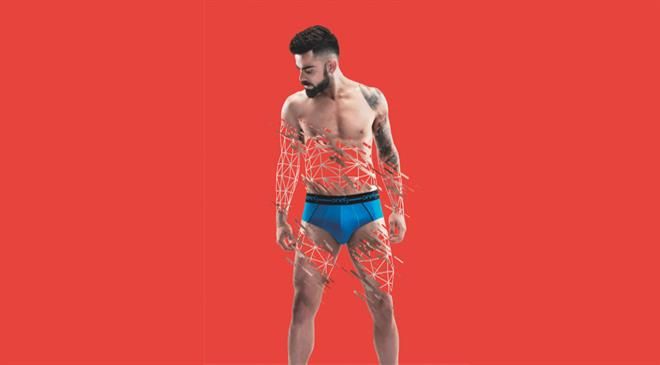We aim to launch One8 innerwear in Dubai by Dec
Artimas Fashions Private Limited (AFPL), a subsidiary of Lux Industries, manufactures innerwear and garments with an installed capacity of more than 3 million pieces per annum. AFPL has exclusive license for One8 innerwear and loungewear and owns Actimaxx, an activewear brand. Headquartered in Kolkata, AFPL aims to rekindle apparel and innerwear segments for men with a singular objective of offering brands that reflect their lifestyle. Managing director (MD) Nischal Puri discusses filling the existing void in the men's premium innerwear market with One8, the licensing agreement and AFPL's position in the market.
What kind of whitespaces you see in your menswear business segment?
The biggest whitespace in the men's innerwear segment is a brand, which is a representative of the youth in India. In my opinion, most of the innerwear brands are being sold on the functional benefits of comfort. While that is important, today's consumers are looking for brands that reflect their personality and ethos. We feel that One8 innerwear by Virat Innerwear will be able to fill this existing gap in the market.

Tell us about your license agreement with One8 and Actimaxx. How do you plan to market and expand the retail presence of these brands?
The licence agreement between Cornerstone Sports, Virat Kohli and AFPL is for nine years that will be renewed for another nine years subsequently. AFPL pays for the licensee and in exchange, Kohli endorses and promotes the brand. Actimaxx is a 100 per cent-owned brand by AFPL.
We aim to launch One8 innerwear in Dubai by December 2019 and it is expected to be available in around 15,000 retail outlets in India in the next 12 months starting January 2020.

What is the size of the domestic menswear market? What percentage does knitwear constitute? Is this figure growing annually?
The size of the domestic menswear market is of ₹15,000 crore. Out of this, ₹5,400 contributes to the mid to premium range and this is 100 per cent knitwear. This figure is witnessing an average growth of 11-12 per cent per annum.
How are you bringing innovation to your products?
Innovation is a continuous process. We have developed speciality fabrics with special treatment aimed at providing consumers with comfort that they deserve.
What are the key growth drivers of the men's knitwear category in India?
The key growth driver in the men's knitwear segment is the substantial change that the clothing industry is witnessing in India. Clothing has become more stylised and more comfort seeking. Compared to wovens, knitwear is far more comfortable and breathable. Indian consumers are becoming more and more self-defining in their choice of clothing, which is more comfortable rather than ritualised.
As more than 66 per cent of India is less than 35 and consumers are becoming more discerning, we feel that the future of knitwear industry is extremely bright.
The union textile ministry launched a comprehensive sScheme for the development of the knitwear sector under PowerTex India early this year. It is said that the scheme will help achieve the target of ?1 trillion by 2022. What are your thoughts on this?
The knitted fabric roughly contributes 27 per cent of the total fabric production of India and there has been a lot of centralisation of this knitted fabric manufacturing, specifically in regions like Ludhiana and Tiruppur. While the government's initiative of launching PowerTex for the knitwear sector but it will largely benefit the power loom industry. The agility of this initiative to achieve the target of ₹1 trillion by 2022 seems to be quite a daunting task for the government. Instead of that, the government should develop a policy that can ease and simplify the ability of manufacturers to raise capital from bank. As most of the knitwear manufacturers are in the small-scale industry, they need more professional and planned intervention by the banking industry. Unfortunately, over the past years the investment ecosystem, especially banks, have not been very conducive to the category.
Are T-shirts still important to the knitwear category in menswear? Besides this, which other product categories are faring well?
T-shirts contribute 30 per cent of the total knitwear sold in India. Further to this, T-shirt as a category is growing by 18 per cent per annum. Hence, it will be appropriate to say that besides the innerwear category, T-shirts would be the largest performer and key driver in the knitwear segment.
What is the demand like in tier-II and tier-III cities compared to the metros?
Tier-II and tier-III cities in India are at the cusp of the breakout. The growth of mass media and digital entertainment has brought tier-II and tier-III cities very close to the metros from the consumption point of view. Today these cities see a favourable demand as is witnessed in the metros. Further, e-commerce has enabled ease of servicing these cities. Hence, tier-II and tier-III cities will contribute as growth drivers in the years to come.
Which are your major markets in India and abroad? Which new ones do you plan to venture?
Around 4,500 cities and towns are our markets in India, and we feel we can cater to this market in the next couple of years. Globally, we are looking at the Middle East as our most preferred market.
What is your best-selling product? What is the product mix under your brand?
The best-selling product category in One8 innerwear is the vest and for Actimaxx, it is the T-shirt.
In terms of mentioning the product mix, One8 innerwear primarily consists of ranges, the 'Edge' and 'Game' collections, inclusive of innerwear varieties and socks in the premium category. On the other hand, Actimaxx includes printed and polo T-shirts along with smart track pants.
How do you combat competition from international brands in knitwear?
Both One8 innerwear and Actimaxx are globally capable brands and they are at the highest level of innovation in product and marketing. We have aggressive plans to take the brands to global markets. Hence, we are not in competition with any international player at this moment.
Please share details of the last two fiscals and the targets set for 2021.
Both One8 innerwear and Actimaxx are quite new to the market. We envision AFPL to be a company with a turnover of more than ₹100 crore by 2021.
Are there any major announcements and expansion plans in pipeline in the next six months? What are your long-term goals?
We aim to introduce One8 innerwear in Dubai by December'2019. As a larger goal, we want to create brands that are globally capable, and that can redefine the segment that we choose. We aim to establish market leaders in the chosen categories in future. (HO)



